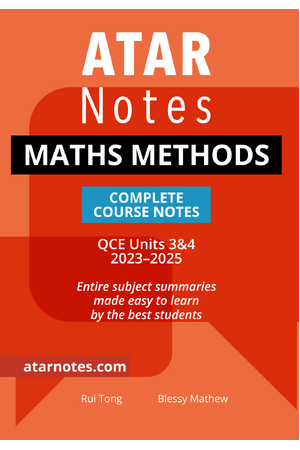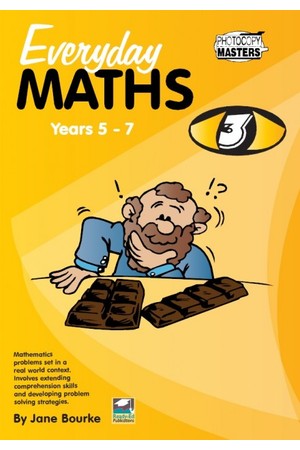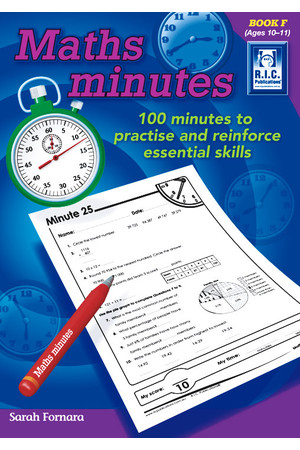Part of the series Maths Quest VCE.
View all products in this series
Jacaranda Maths Quest 11 General Mathematics VCE Units 1 and 2
Everything your students need to succeed.
The best Mathematics series for the new VCE Study Design. Developed by expert Victorian teachers for VCE students.
Get exam ready: past VCAA exam questions (all since 2013)
Students can start preparing from lesson one, with past VCAA exam questions embedded in every lesson. Practice, customisable SACs available for all Units to build student competence and confidence.
Learn online with Australia's most powerful learning platform, learnON
Be confident your students can get unstuck and progress, in class or at home. For every question online they receive immediate feedback and fully worked solutions. Teacher-led videos to learn and re-learn. Instant reports make tracking progress simple.
Combine units flexibly with the Jacaranda Supercourse
An Australian first, build the course you've always wanted with the Jacaranda Supercourse. You can combine all Methods Units 1 to 4, so students can move backwards and forwards freely. Or Methods and General Units 1 & 2 for when students switch courses. The possibilities are endless!
Table of Contents
About This Resource vii
Acknowledgements xiv
1 Investigating and comparing data distributions 1
1.1 Overview 2
1.2 Types of data 3
1.3 Categorical data distributions 8
1.4 Numerical data distributions - frequency tables and histograms 18
1.5 Numerical data distributions - dot plots and stem plots 24
1.6 Characteristics of numerical data distributions 32
1.7 Summarising numerical data - mean and median 36
1.8 Summarising numerical data - range, interquartile range and standard deviation 45
1.9 Symmetrical and asymmetrical distributions 54
1.10 The five-number summary and boxplots 63
1.11 Comparing the distribution of a numerical variable across two or more groups 71
1.12 Review 79
Answers 88
2 Linear relations and equations 103
2.1 Overview 104
2.2 Linear relations and solving linear equations 105
2.3 Developing linear equations 114
2.4 Simultaneous linear equations 118
2.5 Problem solving with simultaneous equations 129
2.6 Review 137
Answers 142
3 Financial mathematics 147
3.1 Overview 148
3.2 Ratio, rates and percentages 149
3.3 Percentage applications and GST 157
3.4 Simple interest applications 165
3.5 Compound interest applications 171
3.6 Purchasing options 181
3.7 Review 189
Answers 193
4 Matrices 197
4.1 Overview 198
4.2 Types of matrices 199
4.3 Adding and subtracting matrices 206
4.4 Multiplying matrices 211
4.5 Inverse matrices and problem-solving with matrices 221
4.6 Communications and connections 232
4.7 Transition matrices 239
4.8 Review 247
Answers 254
5 Linear functions, graphs and models 261
5.1 Overview 262
5.2 Linear functions and their features 263
5.3 Sketching linear graphs 272
5.4 Linear modelling 282
5.5 Determining equations of straight lines 288
5.6 Piecewise linear graphs and their application 292
5.7 Review 307
Answers 314
6 Sequences and first-order linear recurrence relations 323
6.1 Overview 324
6.2 Arithmetic sequences 325
6.3 Arithmetic sequence applications 338
6.4 Generate and analyse an arithmetic sequence using a recurrence relation 343
6.5 Geometric sequences 346
6.6 Geometric sequence applications 353
6.7 Generate and analyse a geometric sequence using a recurrence relation 358
6.8 Modelling growth and decay using recurrence relations 361
6.9 Review 370
Answers 373
7 Financial mathematics extension 379
7.1 Overview 380
7.2 Reducing balance loans modelled using recurrence relations 381
7.3 Solving reducing balance loan problems with technology 389
7.4 Annuities 397
7.5 Perpetuities 405
7.6 Review 413
Answers 419
“fmprelims_printpdf” - 2022/8/18 - 9:19 - Page VI - # 6
8 Investigating relationships between two numerical variables 423
8.1 Overview 424
8.2 Response and explanatory variables 425
8.3 Scatterplots and basic correlation 429
8.4 Informal interpretation of association and causation 439
8.5 The line of good fit and predictions 444
8.6 Introduction to the least squares line of best fit (extending) 460
8.7 Review 469
Answers 478
9 Graphs and networks 485
9.1 Overview 486
9.2 Definitions and terms 487
9.3 Planar graphs 506
9.4 Connected graphs 516
9.5 Weighted graphs and networks, and trees 526
9.6 Review 542
Answers 554
10 Variation 565
10.1 Overview 566
10.2 Direct and inverse variation 567
10.3 Data transformations 572
10.4 Orders of magnitude 585
10.5 Non-linear data modelling 591
10.6 Review 603
Answers 609
11 Space and measurement 621
11.1 Overview 622
11.2 Scientific notation, significant figures and rounding 623
11.3 Pythagoras’ theorem 631
11.4 Perimeter and area of polygons and triangles 641
11.5 Perimeter and area of composite shapes and sectors 648
11.6 Volume 659
11.7 Surface area 670
11.8 Review 681
Answers 689
12 Applications of trigonometry 693
12.1 Overview 694
12.2 Trigonometric ratios 695
12.3 Angles of elevation and depression, and bearings 711
12.4 The sine rule 721
12.5 The cosine rule 729
12.6 Area of triangles 736
12.7 Review 743
Answers 751
13 Similarity and scale 755
13.1 Overview 756
13.2 Similar objects 757
13.3 Linear scale factors 767
13.4 Area and volume scale factors 775
13.5 Review 782
Answers 789
Glossary 791
Index 797
| ISBN | 9781119876236 |
| Publisher | Jacaranda |
| Product Type | Student Books, |
| Year Level | Year 11, |
Be The First To Review This Product!
Help other Teacher Superstore users shop smarter by writing reviews for products you have purchased.





















